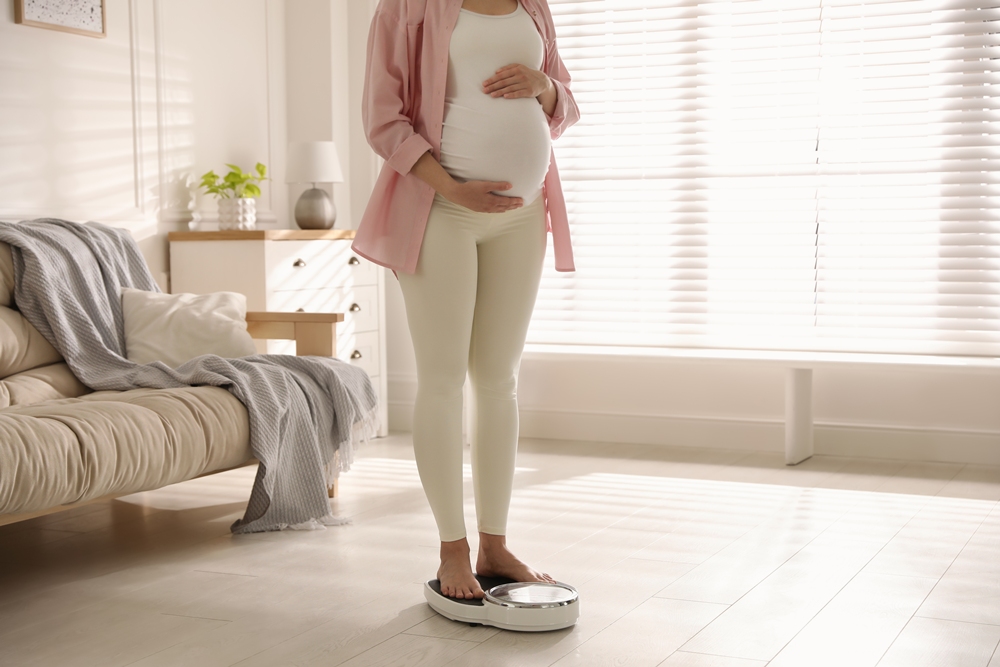Fertility
What Depo-Provera litigation means for the future of women’s health

By Aron Solomon, Pulitzer Prize-nominated writer and chief strategy officer for Amplify
For decades, Depo-Provera was marketed as a convenient, long-lasting birth control option for women who want to take control of their reproductive health without the hassle of daily pills.
It was sold as a solution—an easy shot every three months that promised reliability and freedom.
But what was often left out of the conversation was the growing body of evidence linking the drug to serious, long-term side effects, including bone density loss, increased risk of certain cancers, and severe mental health impacts.
And now, lawsuits against the makers of Depo-Provera are bringing those risks into the national spotlight.
But this fight isn’t just about compensation. It’s about something much bigger: transparency, accountability, and the demand for better healthcare for women.
The lawsuits against Depo-Provera’s manufacturer aren’t happening in a vacuum.
They are part of a broader, long-standing pattern of medical products being introduced, marketed, and prescribed to women without full disclosure of their risks.
Time and time again, women’s health concerns have been dismissed, downplayed, or outright ignored until legal action forces the issue.
We saw it with the Dalkon Shield IUD in the 1970s, which led to infections, infertility, and deaths before it was pulled from the market and resulted in a massive lawsuit.
We saw it with the Yaz and Yasmin birth control pills, which were linked to life-threatening blood clots and only got black-box warnings after lawsuits mounted. And we are seeing it now with Depo-Provera.
At the heart of these lawsuits is a simple but powerful demand: women deserve to know what they’re putting into their bodies.
They deserve full transparency about risks, not sugarcoated reassurances or buried data.
Depo-Provera has been linked to decreased bone mineral density, a serious issue that can lead to osteoporosis later in life.
Studies have shown that the loss is often not fully reversible, yet many women were never warned about this before they started using the drug.
There is also an increased risk of cancer and mood disorders like depression and anxiety—again, side effects that weren’t always fully disclosed or studied in depth before Depo-Provera was widely distributed.
The legal action against the manufacturers of Depo-Provera represents more than just a quest for justice for those who have suffered—it’s a means of demanding systemic change.
These lawsuits pressure pharmaceutical companies to do better, not just in how they test and approve drugs but in how they communicate risks to patients.
They send a clear message that women are no longer willing to accept subpar treatment when it comes to their health. And they put the medical establishment on notice: accountability is no longer optional.
A crucial part of this movement is the push for more inclusive and thorough clinical research.
Historically, medical research has been male-centered, with women often being treated as an afterthought.
This has led to an incomplete understanding of how drugs affect women’s bodies differently.
When women’s unique health needs aren’t properly studied, they aren’t properly addressed—and that has real consequences.
The Depo-Provera lawsuits highlight the need for drug trials that take women’s long-term health seriously, rather than treating side effects as acceptable trade-offs.
Beyond the pharmaceutical industry, these lawsuits are also challenging the role of healthcare providers in informed consent.
Many women report that they were never told about the full extent of Depo-Provera’s risks before receiving the shot.
Some were assured that side effects were minimal or temporary, only to later discover that their bone density had been permanently compromised.
Others struggled with severe depression or anxiety, unaware that their birth control method could be a contributing factor.
Informed consent isn’t just a legal formality—it’s a fundamental right. Women have the right to make decisions about their bodies based on complete, unbiased information, and these lawsuits are reinforcing that right.
The implications of this legal battle extend far beyond Depo-Provera. They are part of a larger cultural shift in how we approach women’s healthcare.
Women are demanding better—not just in birth control options but in all aspects of reproductive and general health.
They are calling for safer medications, clearer communication, and a medical system that prioritises their well-being rather than treating them as a market for profitable drugs.
This movement is already starting to see results.
The increased scrutiny around Depo-Provera and similar cases is prompting more discussions about alternative birth control methods and the need for more research into safer, hormone-free options.
It’s pushing regulators to be more aggressive in requiring clear warnings and more thorough testing. And it’s empowering women to ask more questions, demand better answers, and take an active role in their healthcare decisions.
The lawsuits against Depo-Provera are not just about financial settlements. They are about changing the way women’s health is treated in this country.
They are about shifting the balance of power so that women are no longer passive recipients of whatever the pharmaceutical industry decides to sell them.
They are about ensuring that future generations don’t have to fight the same battles over and over again just to get basic transparency and respect in medical care.
Legal action has long been one of the most powerful tools for change, and in the case of Depo-Provera, it’s proving to be an essential force in the fight for better women’s healthcare.
The message is clear: women will no longer accept being kept in the dark about their own health.
They are standing up, speaking out, and demanding better. And the medical world—pharmaceutical companies, doctors, and regulators alike—needs to start listening.
News
Scientists turn human skin cells into eggs in IVF breakthrough

Researchers have created human eggs from skin cells, in a breakthrough that could transform IVF treatment for couples who have no other options.
The work remains at an early stage, but if scientists can refine the process it could allow women who are infertile due to age, illness or medical treatment to have genetically related eggs.
The same technique could also be used to make eggs for same-sex male couples.
Prof Shoukhrat Mitalipov, who led the research at Oregon Health and Science University in Portland, said: “The largest group of patients who might benefit would be women of advanced maternal age.
“Another group are those who have been through chemotherapy because that can affect their ability to have viable eggs.”
While women are expected to be the primary beneficiaries, the skin cells used to make eggs need not come from potential mothers.
“We used female skin cells in this study, but you could use skin cells from males as well,” Mitalipov told the Guardian.
“You could make eggs for men, and that way, of course, this would be applicable to same-sex couples.”
The work draws on cloning techniques pioneered in the 1990s at the Roslin Institute in Scotland.
A team led by the late Ian Wilmut used somatic cell nuclear transfer – a process that moves genetic material between cells – to create Dolly the sheep.
The procedure involved removing the nucleus (the cell’s control centre containing genetic information) from an adult sheep cell and placing it into a sheep egg that had had its own nucleus removed.
The resulting embryo was carried to term in a surrogate mother.
The Oregon team took a similar approach by collecting skin cells from women and removing the nucleus from each.
The nucleus, which contains 46 chromosomes carrying around 20,000 genes that make up the human genetic code, was placed into healthy donor eggs that had had their own nuclei removed.
The main challenge for scientists was that healthy human eggs normally contain only 23 chromosomes.
Another 23 come from sperm during fertilisation, producing the full set of 46 required for development into an embryo and eventually a baby.
Writing in Nature Communications, the Oregon team described how they tackled the problem of excess chromosomes.
After fertilising the eggs with sperm, they activated them using a compound called roscovitine.
This caused the eggs to move roughly half of their chromosomes into a structure called a polar body – a small cell formed during egg development – leaving the remaining chromosomes to pair with those from the sperm.
In a healthy fertilised human egg, 23 chromosomes from the mother pair with 23 from the father.
However, the Oregon team found that in their lab-created eggs, the chromosomes paired up at random. This led to embryos with the wrong number of chromosomes or incorrect pairings.
“These abnormal chromosome complements would not be expected to result in a healthy baby,” said Prof Paula Amato, a co-author of the study at Oregon.
The team is now working to refine the process.
Of the 82 eggs created, fewer than 10 per cent developed to the stage at which embryos are typically transferred during IVF.
None were cultured beyond six days, suggesting the process remains inefficient.
Mitalipov described the work as a “proof of concept” with more challenges ahead. Perfecting the method and proving its safety in patients could take another decade.
“I think it’s going to be harder than what we’ve done over the years thus far, but it’s not impossible,” he said.
Other scientists praised the breakthrough.
Prof Richard Anderson of the University of Edinburgh said: “Many women are unable to have a family because they have lost their eggs, which can occur for a range of reasons including after cancer treatment.
“The ability to generate new eggs would be a major advance.
“There will be very important safety concerns, but this study is a step toward helping many women have their own genetic children.”
News
NHS introduces new ovarian cancer screening for high-risk women

High-risk women can now delay ovary removal surgery through NHS screening, helping them preserve fertility and avoid early surgical menopause.
The ROCA test tracks women with BRCA gene mutations every four months, monitoring cancer risk markers instead of requiring immediate preventive surgery.
University College London Hospitals NHS Foundation Trust has begun rolling out the programme, with plans for national expansion after approval from the National Institute for Health and Care Excellence (NICE).
BRCA1 and BRCA2 mutations greatly increase the risk of breast and ovarian cancer. Normally, BRCA genes repair damaged DNA, but when faulty they allow tumours to grow more easily.
Breast cancer screening with mammograms is long established, but until now there has been no equivalent for ovarian cancer. Women carrying BRCA mutations were typically advised to have their ovaries removed preventively – a step that ends fertility and triggers menopause immediately.
The ROCA test monitors changes in CA125, a blood protein that can indicate ovarian cancer when levels rise.
By testing every four months, women can keep track of their risk while delaying surgery if they wish.
Professor Adam Rosenthal, consultant gynaecologist at UCLH, said the test was designed as a damage-limitation option for women not ready for surgery.
A raised result means patients can reconsider surgery, while regular monitoring increases the chance of detecting cancer early, when outcomes are better.
Natasha Wray learned she carried the BRCA gene after breast cancer treatment at 36. She was advised to have her ovaries removed but refused.
She said: “I was 36 at the time, and I said, absolutely not. I’d just gone through seven rounds of chemo, extensive surgery, and had sort of a year and a half, two years of my life caught up in cancer treatment, and I just wanted to be left alone.
“And I also didn’t want to go through a surgical menopause in my mid-30s.
“I also very much wanted to be a mum, so I definitely wanted to hold on to any fertility that I did have.
She initially paid privately for the ROCA tests and admitted they brought anxiety.
But Rosenthal said the screening helps keep the decision about surgery at the forefront for patients.
At 41, Wray had a baby. Two years later, her test results showed raised CA125 levels, and she delayed before eventually choosing surgery.
“It wasn’t easy,” she said.
“But I do think it’s really important as well that women’s bodies aren’t just seen as baby making bodies and machines.
“I very much wanted to be a mother. That wasn’t my sole purpose for holding onto my ovaries.
“It was very personal and it actually had nothing to do with anybody else. It was very much me, how I felt in my body, what had already been felt like to me, taken from me.”
NICE has approved the ROCA test for BRCA carriers, with health officials highlighting its cost-effectiveness and aiming to make it available across England.
Diagnosis
Preconception BMI linked to fertility and miscarriage risks

Preconception BMI outside the healthy range is linked to longer time to pregnancy and higher miscarriage risk, new research has revealed.
The study followed 3,033 pregnancy or preconception episodes among couples in Rotterdam between August 2017 and July 2021, examining how body mass index (BMI) – weight relative to height – affects fertility.
Women had a median age of 31.6 years and men 33.4. BMI categories were underweight (under 18.5), normal (18.5–24.9), overweight (25–29.9) and obese (30 or greater).
Fecundability – the chance of conceiving in one menstrual cycle – declined with each BMI unit for both sexes.
Women with obesity had a 28 per cent lower chance of conceiving than women of normal weight, while overweight women had a 12 per cent reduction.
Overweight and obese men had an 11 per cent reduction compared with normal-weight men.
The researchers wrote: “A better understanding of the separate and combined associations of BMI in women and men with fertility and miscarriage outcomes is needed to develop novel targeted population strategies to optimise BMI from the preconception period onward.”
Of the cases studied, 17.8 per cent of women were classed as subfertile, meaning conception took more than 12 months. In addition, 11.3 per cent of pregnancies ended in miscarriage, defined as loss before 22 weeks’ gestation.
Underweight women had nearly twice the risk of subfertility compared with normal-weight women.
Overweight women faced a 35 per cent higher risk, while women with obesity had a 67 per cent higher risk.
Miscarriage risks were also higher outside the healthy BMI range: overweight women had a 49 per cent higher risk and women with obesity a 44 per cent higher risk than normal-weight women.
The median time to pregnancy across all participants was 3.7 months. The study also recorded use of assisted reproductive technology, including in vitro fertilisation, among couples struggling to conceive.
The investigators concluded: “Optimising BMI from the preconception period onward in women and men might be an important strategy to improve fertility and pregnancy outcomes.”

 News4 days ago
News4 days agoScientists turn human skin cells into eggs in IVF breakthrough

 Hormonal health5 days ago
Hormonal health5 days agoFDA plans to revise black box warning on menopause hormone therapies

 News5 days ago
News5 days agoDaily pill could delay menopause ‘by years,’ study finds

 News4 days ago
News4 days agoMothers’, not fathers’, mental health directly linked to their children’s, study shows

 News3 days ago
News3 days agoManagers still unprepared to discuss menstrual health, study finds

 News1 day ago
News1 day agoAI-powered women’s health companion Nexus launches in UK

 News3 days ago
News3 days agoAncient herb to modern must-have: Why ashwagandha is capturing UK women’s attention

 Insight3 days ago
Insight3 days agoDrug improves survival in triple-negative breast cancer





















